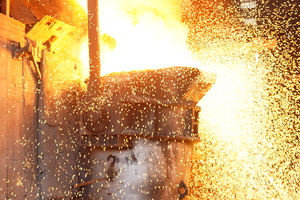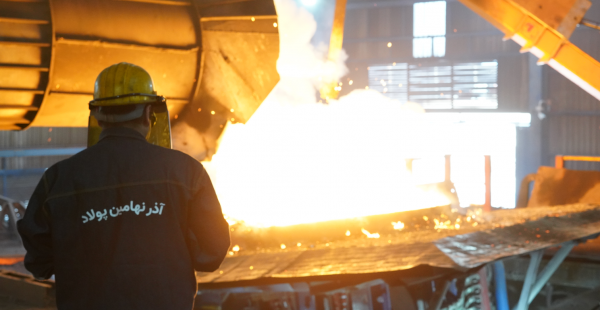Review of Microalloyed Boron Steel
History, Applications, Comparison with Other Alloys, Properties, and Advantages of Use
In the world of modern industries, the selection of the right material for the production of components and structures is of great importance. Microalloyed boron steel, produced by adding a small amount of boron (usually in parts per million or approximately 0.001 to 0.003 percent) to the chemical composition of steel, is considered an advanced alloy. This type of steel, with significant improvements in hardness properties, tensile strength, and high-temperature resistance, has gained a special place in key industries such as automotive manufacturing, construction, heavy machinery, and even certain sectors of the marine and aerospace industries. The use of this steel not only enhances the performance of components but also offers substantial economic and thermal processing advantages compared to conventional or other alloy steels.

The use of alloys to improve the technical properties of steels has been considered since the beginning of the Industrial Revolution. However, serious and systematic studies on the addition of rare elements such as boron to steels began in the second half of the twentieth century (the 1950s and 1960s). Researchers during this period discovered that even adding minute amounts of boron to steel could alter its microscopic structure and significantly enhance properties such as hardness, wear resistance, and high-temperature endurance.
In the early years, the primary focus of research was to find economic solutions for increasing the hardenability of steel and reducing heat treatment costs. The results showed that the precise addition of boron leads to the formation of fine-grained phases and stabilization of the crystalline structure, which significantly enhances steel’s resistance to fatigue and wear. Over time, with advancements in production technologies, thermal processes such as nitriding and hardening treatments improved in a way that, with the presence of boron, the technical properties of steel were elevated to a level that ultimately led to extensive applications in heavy industries.
Today, due to the need for lightweight and durable components that can withstand dynamic and thermal loads, microalloyed boron steel has been selected as a key material in the design of advanced structures. Progress in precise control of boron addition dosage and the use of advanced thermal technologies have paved the way for optimal utilization of this type of steel in harsh industrial environments.
Microalloyed boron steel, due to its unique characteristics, has extensive applications across various industries.
Automotive Industry: One of the most important applications of this steel is in the manufacturing of automotive components such as power transmission systems, engine blocks, chassis, and drive parts. The need for lightweight, durable materials with high thermal quality in modern vehicles has made this steel an ideal choice.
Construction and Heavy Machinery Industries: In construction projects, especially in structures exposed to cyclic loads and harsh environmental conditions, the use of microalloyed boron steel helps increase durability and reduce maintenance costs. Additionally, in the manufacturing of heavy machinery such as cranes, excavators, and drilling equipment, the exceptional properties of this steel enhance safety and efficiency.
Agricultural Equipment: In the manufacturing of components for tractors, harvesting machines, and other agricultural equipment, materials with high resistance to wear and impact are essential. Microalloyed boron steel, with its suitable thermal capability and mechanical strength, is considered an optimal choice in this field.
Marine and Aerospace Industries: In projects that require materials with an optimal combination of hardness and high-temperature resistance, such as aircraft components and marine structures, the use of this steel enhances safety and reduces structural weight.
This wide range of applications demonstrates how a small innovation in chemical composition can have a significant impact on improving the performance of industrial products.
Selecting the right material in various industries is a strategic decision. In this regard, the comparison between microalloyed boron steel and other alloy steels, such as chromium, nickel, vanadium, and molybdenum-containing steels, is conducted from different perspectives.
Microscopic Structure and Thermal Processes: The addition of boron, even in small amounts, causes significant changes in the crystalline structure of steel. Unlike some other alloys that require complex thermal processes, the use of boron facilitates the hardening process. This allows heat treatment to be carried out more quickly and at a lower cost.
Production Cost: Alloying elements such as nickel or chromium often significantly increase production costs. In contrast, boron, due to its relatively low price and high efficiency, is considered a cost-effective option. Therefore, from an economic perspective, microalloyed boron steel is more competitive compared to alternatives containing expensive elements.
Mechanical Properties: Compared to conventional steels or even some advanced alloys, microalloyed boron steel offers an optimal combination of hardness, tensile strength, and thermal resistance. While some alloys may perform better in specific aspects, this steel provides a balanced mix of all essential properties, making it more suitable for broader industrial applications.
Performance in Harsh Environmental Conditions: Resistance to wear, corrosion, and fatigue are crucial factors in heavy industries. With the addition of boron, the steel’s performance against temperature fluctuations and cyclic loads has improved, making it superior to some other alloys.
These differences have led engineers and manufacturers to use microalloyed boron steel as a high-performance and cost-effective material in many industrial projects.
The technical properties of an alloy material are highly dependent on its chemical composition and precise control of additive doses. Here are some key characteristics of microalloyed boron steel:
Hardness Enhancement: The presence of a small amount of boron stabilizes the crystalline structure and reduces the grain size of the steel. This phenomenon leads to increased hardness and improved wear resistance. In industrial applications, this property helps reduce abrasion and degradation of components under high-load conditions.
High Tensile Strength and Durability: With the addition of boron, microalloyed steel can withstand tensile and compressive forces more effectively. This increased resistance extends the service life of manufactured components and reduces the need for repairs and replacements.
Thermal Resistance: One of the key advantages of this steel is its ability to maintain mechanical properties at high temperatures. The improved structure resulting from the addition of boron ensures that even in thermal processes and hot environments, the steel continues to perform optimally.
Weldability and Formability: Although the addition of boron can introduce challenges in the welding process, at optimal doses, forming and welding operations become feasible with precise thermal control. This feature allows engineers to utilize microalloyed steel in the production of complex and precise components.
Corrosion Resistance: In corrosive environments and under constant exposure to pollutants, the corrosion resistance properties of this steel are among its advantages, making it suitable for marine and construction projects.
These technical properties simultaneously enhance component performance in harsh operational environments and improve the overall efficiency of industrial systems.
Based on the mentioned characteristics, the advantages of using this steel can be categorized into several main aspects.
Economic Efficiency: The use of boron as a relatively low-cost additive, compared to expensive alloying elements like chromium and nickel, allows for reduced production costs. Consequently, from an economic standpoint, selecting this material for manufacturing helps minimize heat treatment and final processing expenses, making it a highly suitable choice.
Extended Service Life of Components: Due to its high mechanical and thermal properties, components made from microalloyed boron steel exhibit superior performance against wear, fatigue, and harsh environmental conditions. This leads to lower maintenance costs and reduced long-term repair expenses.
Reducing Structural Weight Without Compromising Strength: In the automotive and aerospace industries, weight reduction alongside sufficient strength is a key design objective. The use of this type of steel allows engineers to produce lightweight yet durable components, leading to improved efficiency and reduced fuel consumption.
Optimized Thermal Processes: The ability to perform hardening and nitriding operations more easily and in less time than other alloy types increases efficiency and reduces production cycle time. This plays a crucial role in meeting the demands of high-speed industrial markets.
Flexibility in Design and Manufacturing: The improved properties of microalloyed boron steel allow for the design of complex components with diverse geometries without negatively affecting final performance.
Considering all these advantages, microalloyed boron steel is now recognized as a strategic choice across various industries. The use of this material enhances the performance and efficiency of final products and plays a significant role in the sustainable development of modern industries.
Despite its numerous advantages, utilizing microalloyed boron steel requires specific technical precision. Precise control of the boron dosage is crucial, as increasing or decreasing the exact amount of this element can directly impact the final properties of the steel. Additionally, thermal processes must be carefully regulated to prevent microscopic defects. Ongoing research at universities and research centers continues to focus on optimizing production processes and improving quality control.
Additionally, researchers are striving to utilize advanced technologies such as numerical modeling and microstructural simulation to more accurately predict the changes in properties resulting from the addition of boron. These approaches will enable the future production of steels that are not only optimized in terms of performance but also have fewer negative environmental impacts.

